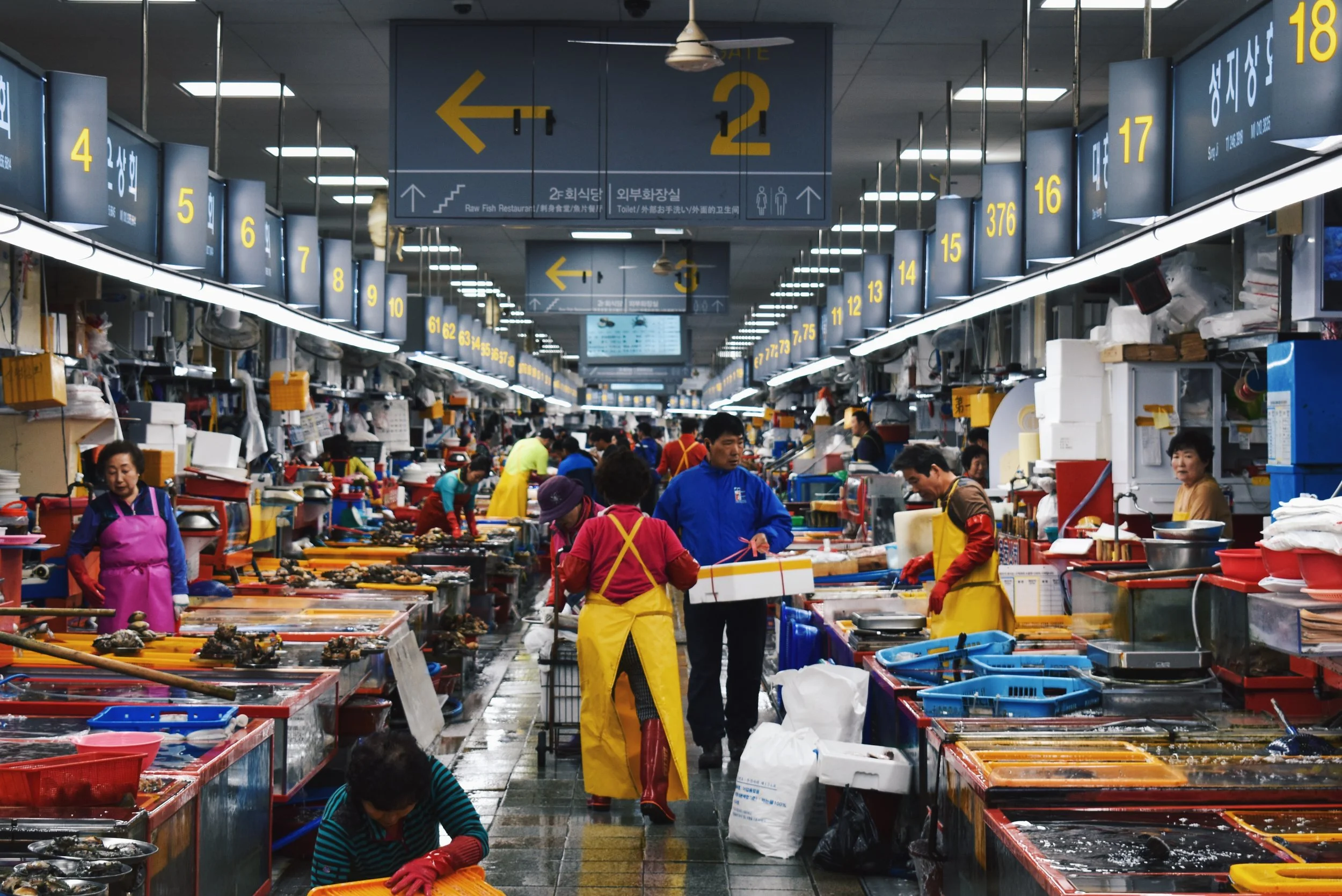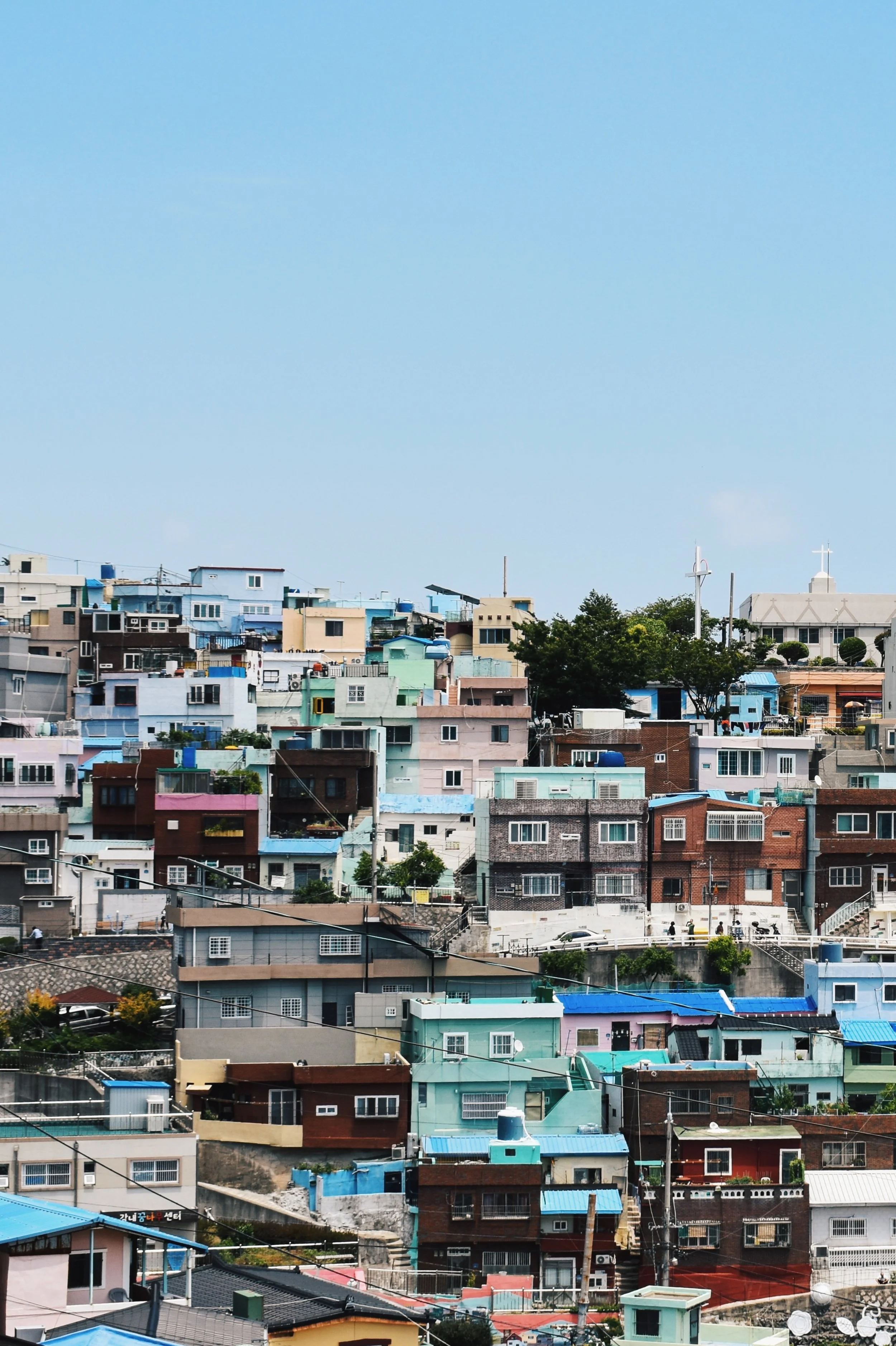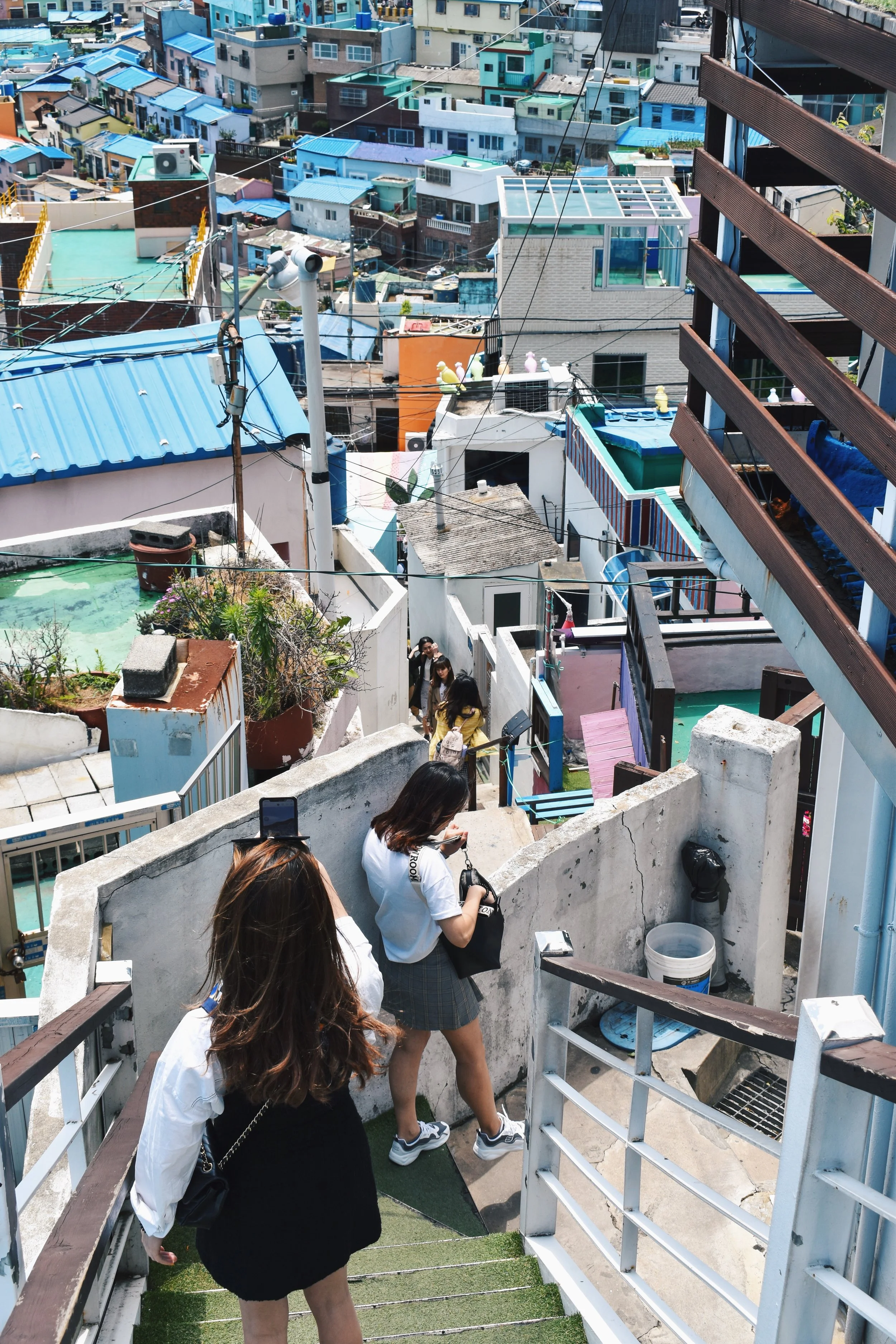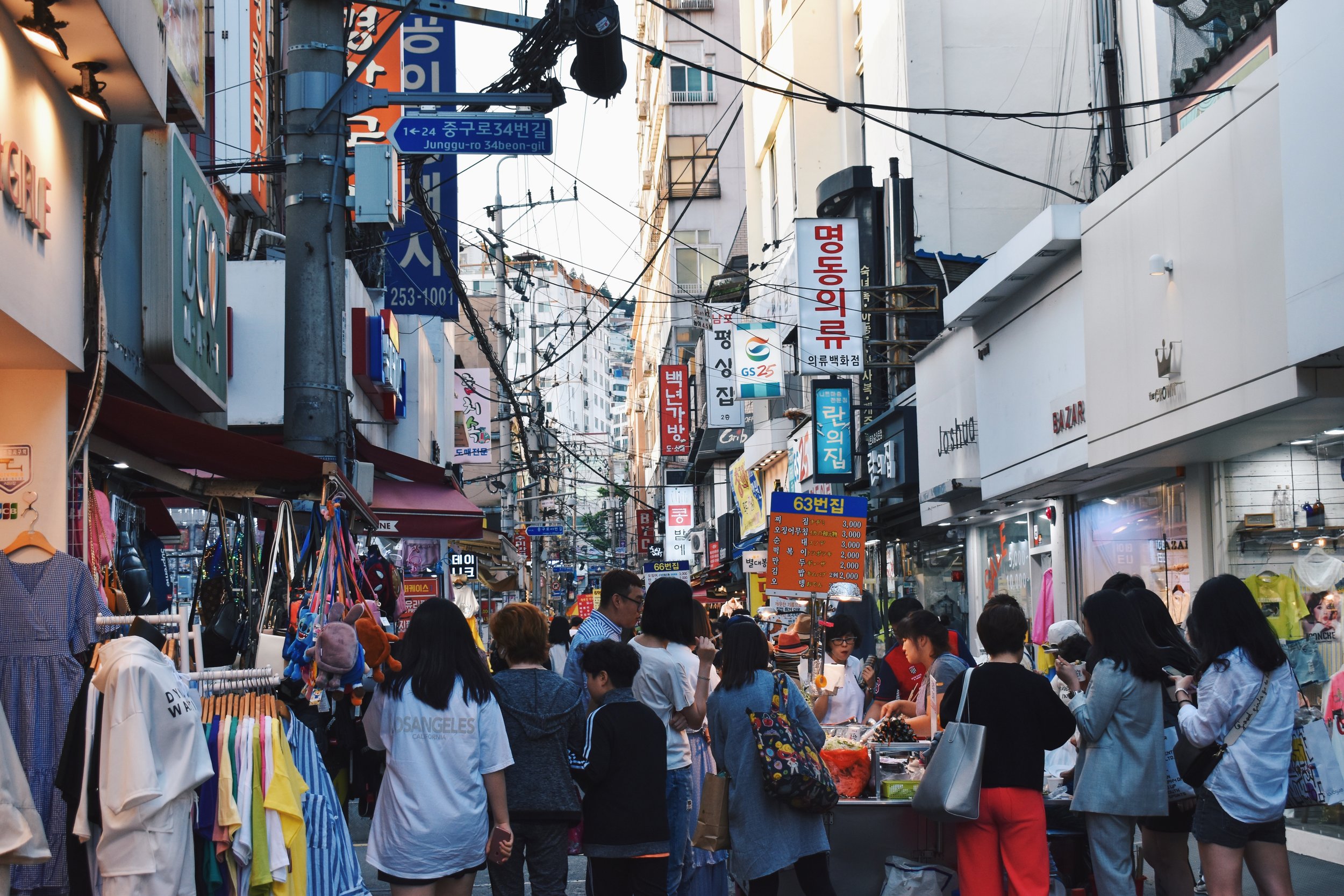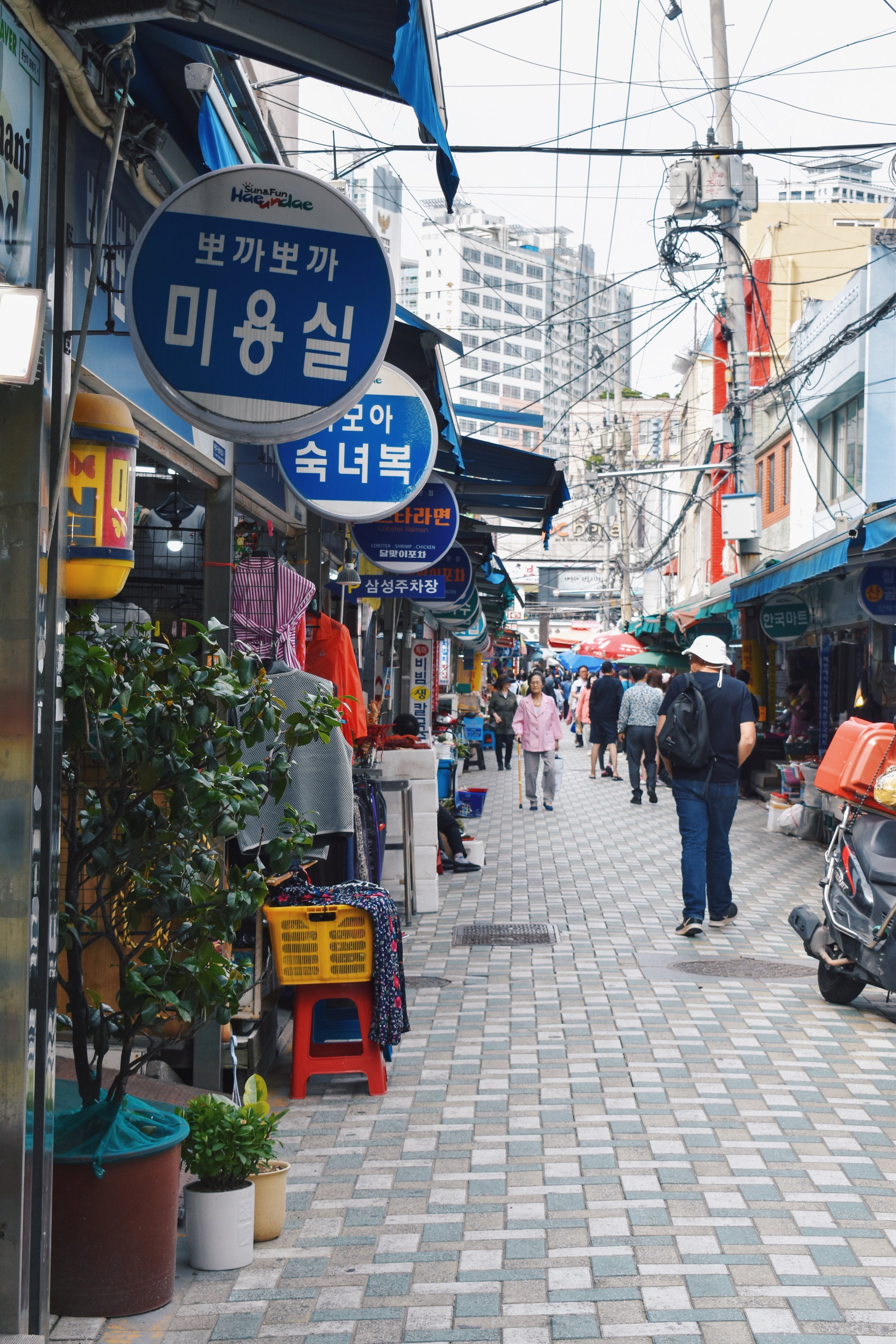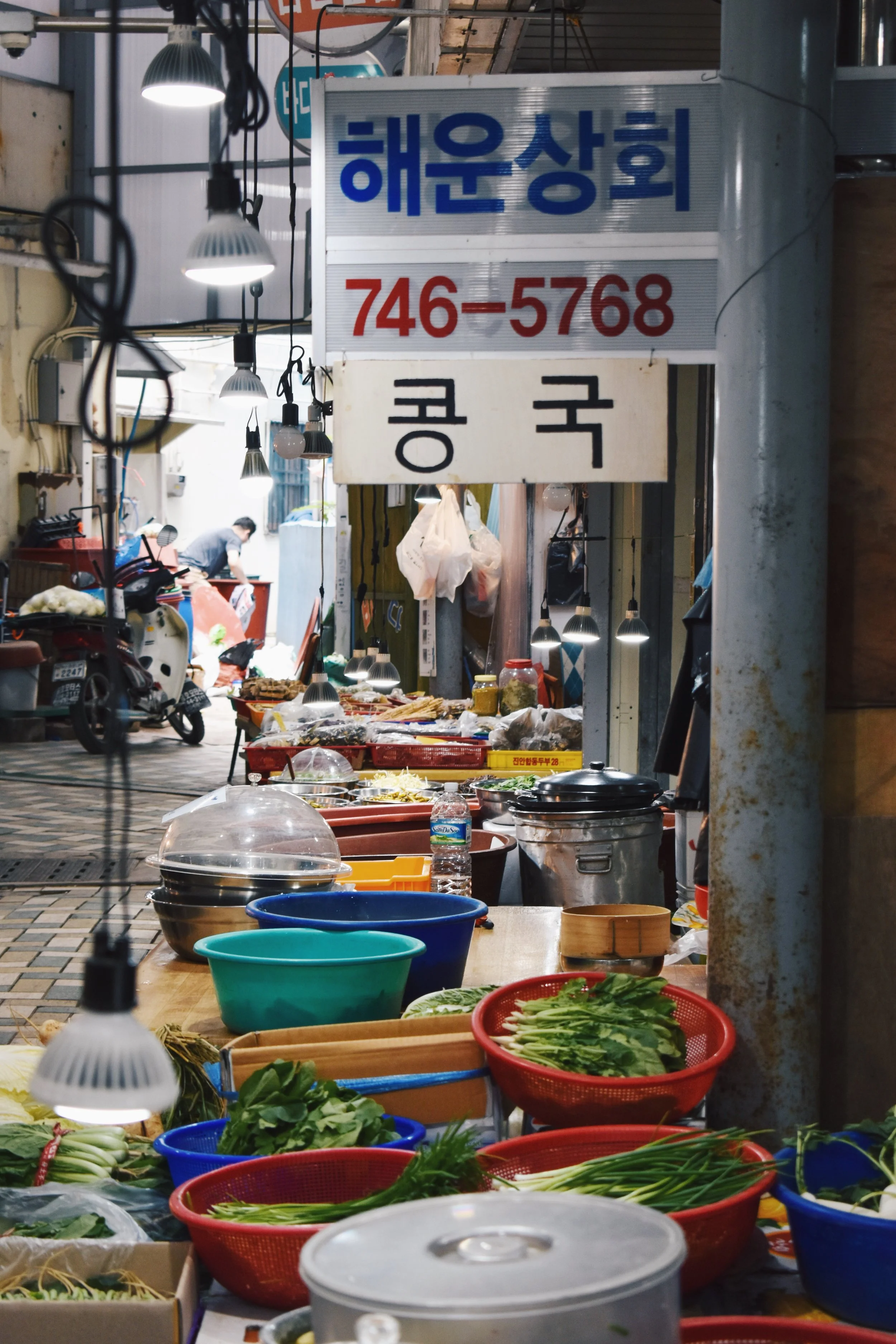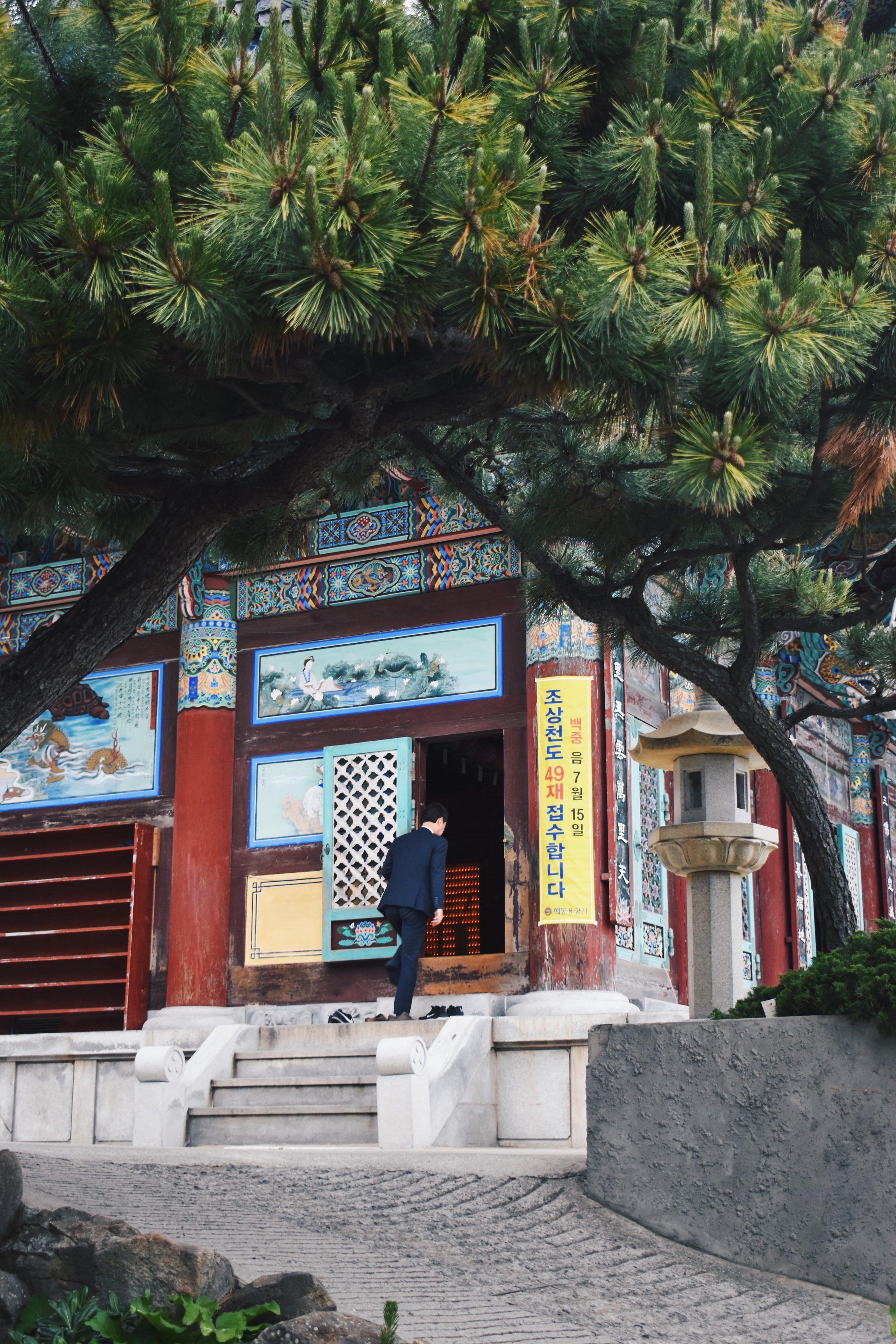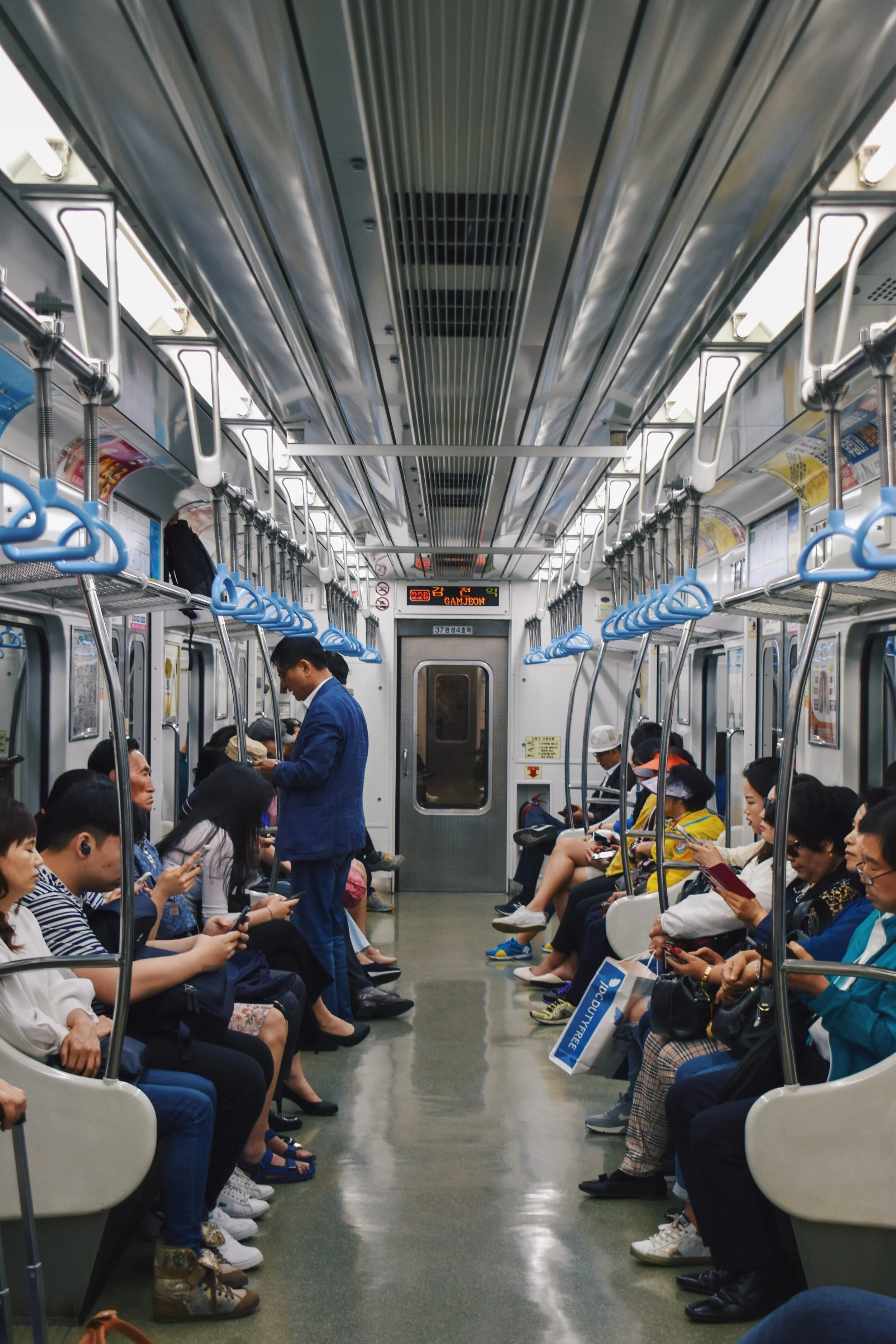What to See & Do in Busan: A Complete Itinerary for 3 Days and More

Busan is a massive port city and metropolis on the southern end of the Korean peninsula. Think fresh fish markets alongside sandy beaches, glass skyscrapers and mega malls jostling with narrow busy streets and local boutiques, posh restaurants a stone’s throw away from push carts selling Korean street food favourites etc., all in a city where you can also find peaceful temples in the mountains and on the coast, and you’ve somewhat got an idea of what Busan is like.
Most visitors head to Seoul when in South Korea, but Busan is rapidly gaining in popularity, helped by the fact that the KTX high speed train linking the capital city with Busan only takes 2.5 hours each way.
Read: KakaoMap or Naver Map— Which App is Best to Use for South Korea?
Read: What It Was Like on a 5.5 Hour Mugunghwa Slow Train Between Seoul and Busan
Read: 3 Things I Wish I Knew About Busan Before Visiting
Even getting in from overseas is rather convenient via Busan’s Gimhae International Airport, which was my gateway to Busan.
Some visitors opt to do Busan as a day trip from Seoul, but I’d highly advise against it for several reasons— mainly because Busan is very spread out and therefore requires at least 2 to 3 full days to really see the highlights (and that’s still pretty rushed). Save the KTX fare of 50, 000KRW or so to spend more time in and around Seoul instead of trying to jam everything in Busan in a single day.
Read: Where to Stay in Busan— A Guide to the City’s Neighbourhoods
Read: A Day in Busan’s Taejongdae Resort Park
How to Get Around Busan
Busan is relatively easy to get around.
It’s much easier to use the T-money or Cashbee contactless payment cards that you can top up for transport, both in Busan and Seoul. Cashbee is popular in the south, while the T-money is used everywhere in Seoul and for much of the rest of the country too.
Handily, having one is good enough for both Busan and Seoul.
You can buy these cards from convenience stores, and I got my T-money card from the convenience store at Busan’s airport, where I also reloaded the card there. Bear in mind that it is South Korean law that the T-money can only be topped up with cash only, so have some South Korean won on hand.
Whilst looking around for SIM cards at the airport, LG U+ was offering a special offer where you can also get a free T-money card if you purchase a data plan and SIM card with them, so check if the prices and dates work for you. I ended up getting a SIM card from another provider just because the plan worked better for the number of days I had in Korea.
Still, expect to pay 4 000KRW for a T-money before adding money into the card.
The card doesn’t expire, so you don’t have to take all the money out of the card once you leave if you’re heading back at some point, but if you choose to refund the balance on your card, ensure the balance isn’t over 50 000KRW as withdrawing money then can be very difficult and time-consuming. You’ll also pay a nominal fee of 500KRW for this service.
You can then use your T-money or Cashbee cards for subways and buses.
Day 1: Jagalchi Market, Gamcheon Cultural Village, Nampo
Jagalchi Market (부산 자갈치시장)
Begin your day at Jagalchi Market, Busan’s premier fish market which you can get to via the many buses or either the Jagalchi or Nampo subway stations.
Before going, I saw loads of photos of the market and they were all out in the open and on a seemingly endless row of streets.
Turns out, Jagalchi Market itself is an indoor market located in a building where you can choose the seafood you want on the ground floor and have them cooked in the restaurants upstairs.
The market is bustling in the morning and you can easily have a feast here for lunch.
Outside of Jagalchi Market, you can continue walking down the port to find the street-side vendors and end your market walk at Changmu-Dong Daybreak Market (충무동해안시장).
WHERE | JAGALCHI FISH MARKET
52, Jagalchihaean-ro, Jung-gu, Busan
부산광역시 중구 자갈치해안로 52 (남포동4가)
Gamcheon Cultural Village (감천문화마을)
After lunch, take bus 2 from the markets to head to Gamcheon Cultural Village, possibly Busan’s most famous attraction.
I should stress taking the bus up to Gamcheon as it involves winding up the very steep hills, which can be quite the trek if you’re coming from downtown unless you truly plan to do some light hiking up the surrounding neighbourhood.
Gamcheon is actually a neighbourhood of pastel-coloured houses built on a mountain which has earned itself the nickname of the Santorini of the East, which feels a bit of a stretch, but brings to mind the Blue City of Jodhpur, India and Chefchaouen in Morocco instead.
I was expecting Gamcheon to be a touristy, one-dimensional area, but Gamcheon is actually rather beautiful once you step away from the main tourist strip near the entrance where all the shops and restaurants are.
Gamcheon is a living, breathing neighbourhood with actual residents, meaning you should be a little mindful that tourists are running around a neighbourhood where people are actually living in, and there are a number of signs everywhere saying you shouldn’t be running on to rooftops and staircases where you shouldn’t, or trespassing into someone’s house, or shouting loudly.
The beauty here is losing yourself in the myriad of narrow streets and going around to the observatory decks.
You might have heard of the Little Prince statue here, and there’s a line for it if you’d like to grab a picture with it.
Spend your afternoon exploring the streets and taking photos, and you can visit one of the many cafes here with stunning views overlooking the village.
WHERE | GAMCHEON CULTURAL VILLAGE
203, Gamnae 2-ro, Saha-gu, Busan
부산광역시 사하구 감내2로 203 (감천동)
Lotte Department Store Gwangbok Branch 롯데백화점 (부산 광복점) / Nampo-Dong (남포동)
As the evening begins to wind down, head to Lotte Department Store at Nampo via the many buses around like bus numbers 17, 87, and 134. Head to this Lotte store for some of the most incredible views from the rooftop deck.
I was expecting the rooftop deck to be rather small like a lot of other departmental store observatory decks around the world, but this Lotte branch’s deck is massive, and you can easily spend at least half an hour walking through everything to photograph Busan’s stunning skyline.
Here’s where I got some of the most stunning views of Busan all round.
After watching the sun set on the cityscape, walk over to the busy streets of Nampo-Dong where it really comes to life at night.
If you’re looking for a quintessential Korean street food experience, the streets around BIFF Square is where you’ll find meat skewers, tteokbokki, sausages, kimchi pancakes and etc. on push carts.
If not, head to one of the many restaurants here for Korean fried chicken, jjajangmyeon, or Korean BBQ joints etc.
WHERE | LOTTE DEPARTMENT STORE GWANGBOK BRANCH
2, Jungang-daero, Jung-gu, Busan
부산광역시 중구 중앙대로 2
DAY 2: SEOMYEON, JEONPO CAFE STREET, CENTUM CITY
Seomyeon (서면)
Begin your day at Seomyeon, home to Busan’s busy downtown to do a spot of shopping or to stop in one of the many cafes or coffee houses.
Seomyeon Underground Shopping Centre (서면지하도상가) is one of Busan’s biggest underground shopping centres, which you’ll have heard of if you’ve read anything about South Korea due to the sheer number of underground shopping centres that can be found in this country. It’s been said that some great bargains can be found here.
Have a relaxing brunch after at Jeonpo Cafe Street (전포카페거리), where many, many beautiful coffeehouses and cafes famous in Busan can be found. If you’ve heard of some of Busan’s most Instagrammable cafes, there’s a large chance they’re located on this block. A famous cafe to try includes lovesome cafe, but you can really pick and choose from any you prefer.
WHERE | SEOMYEON UNDERGROUND SHOPPING CENTRE
737, Jungang-daero, Busanjin-gu, Busan
부산광역시 부산진구 중앙대로 737 (부전동)
Centum City (센텀시티)
Take the subway after to Centum City, which is synonymous with shopping in Busan, thanks to the fact it is home to the world’s largest shopping complex, according to the Guinness World Records.
That shopping complex in question is Shinsegae Centum City (신세계 센텀시티) and you can easily lose a couple of hours here.
If you’re not up for shopping, you can also check out the Busan Museum of Art (부산시립미술관).
WHERE | SHINSEGAE CENTUM CITY
35, Centum nam-daero, Haeundae-gu, Busan
부산광역시 해운대구 센텀남대로 35 (우동)
WHERE | BUSAN MUSEUM OF ART
58, APEC-ro, Haeundae-gu, Busan
부산광역시 해운대구 APEC로 58 (우동)
DAY 3: HAEUNDAE, HAEDONG YONGGUNGSA TEMPLE
Haeundae Beach (해운대해수욕장)
By far South Korea’s most famous beach, this is where you’ll begin to really understand why some call Busan the Miami of South Korea.
Busan actually boasts other beaches along the coast, but Haeundae is wide enough to cope with the sheer number of visitors that descend upon the beach in the warmer months.
It’s also a swimming-friendly beach due to the shallow bay.
In the summer, beach umbrellas take over, but at the beginning of summer when I visited, there was the renowned Haeundae Sand Festival, which marks the beginning of another busy season in Haeundae.
Taking place from late May to early June, the standout of the festival includes the massive and elaborate sand sculptures.
Once you step away from the beach, you can easily spend a few hours at a cafe or restaurant for a meal or drink, as well as the many shops all around the area.
If you’d like to explore another market, Haeundae has one too that is unmissable, going by the name of Busan Haeundae Traditional Market (부산 해운대전통시장), which features a whole row of restaurants, some more famous and crowded than others from which you can pick and choose.
WHERE | HAEUNDAE BEACH
264, Haeundaehaebyeon-ro, Haeundae-gu, Busan
부산광역시 해운대구 해운대해변로 264 (우동)
WHERE | HAEUNDAE TRADITIONAL MARKET
22-1, Gunam-ro 41beon-gil, Haeundae-gu, Busan
부산광역시 해운대구 구남로41번길 22-1
Haedong Yonggungsa Temple (해동 용궁사)
Before daylight runs out, hop on buses 9, 100, or 181 from one of the bus stops around the area of Haeundae, where it’ll take you anywhere from 40 to 50 minutes to head to Haedong Yonggungsa Temple.
If you’re following this itinerary diligently and are taking the bus from the market, the bus stop can be found at the end of Haeundae Traditional Market in the direction away from Haeundae Beach’s entrance, where you’ll hop on bus 100 and take a 40 minute ride directly to the temple.
The other bus numbers are for if you’re elsewhere around Haeundae, where the journey will take 10 minutes longer.
After you get off the bus on the main street, you’ll have to walk into a street leading to the temple for about 15 minutes to actually get to Haedong Yonggungsa.
This temple is one of South Korea’s most famous temples, due to the fact that most Korean temples are situated high up in the mountains, but Haedong Yonggungsa is built onto a cliff directly facing the sea, resulting in a different atmosphere altogether.
Admire the views from the lookout points and explore the peaceful temple grounds.
For dinner, you can head back to Haeundae for the number of restaurants and nightlife around. Haeundae also boasts quite a number of bars.
WHERE | HAEDONG YONGGUNGSA TEMPLE
86, Yonggung-gil, Gijang-eup, Gijang-gun, Busan
부산광역시 기장군 기장읍 용궁길 86
With that marks the end of a 3-day itinerary covering Busan’s most famous sites.
Mind, there’s still plenty more to do, and if you have more time, spend a day at Taejongdae Recreational Park for some peace away from the buzz of Busan’s skyscrapers and main streets, or travel almost an hour from the city to head to a temple in the mountains— Beomeosa Temple (범어사) is the most famous. Alternatively, visit Busan Tower or Oryukdo Skywalk to get some great views. Not to mention the lively streets around Pusan National University (PNU), where you’ll find many bars and restaurants to cater to the university population around. If you’d like to get some great views of Busan’s iconic suspension bridge by the name of Gwangandaegyo Bridge (부산 광안대교), you can even head to Gwangalli Beach (광안리해수욕장), especially popular at night, to watch the bridge light up.

